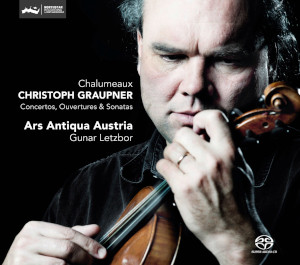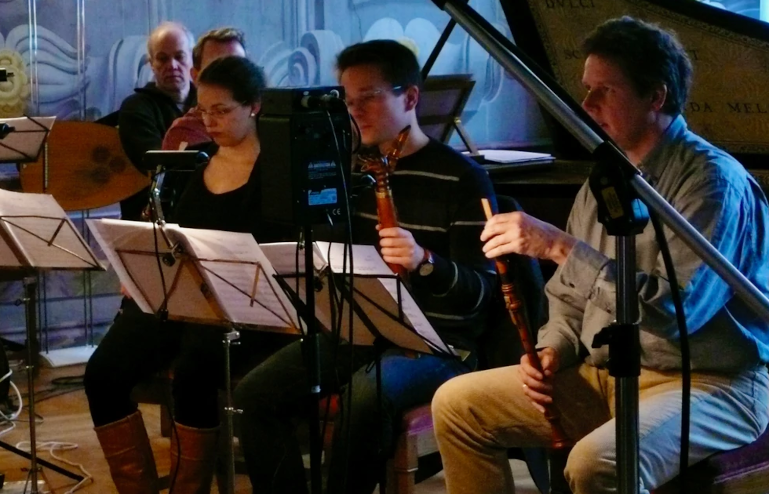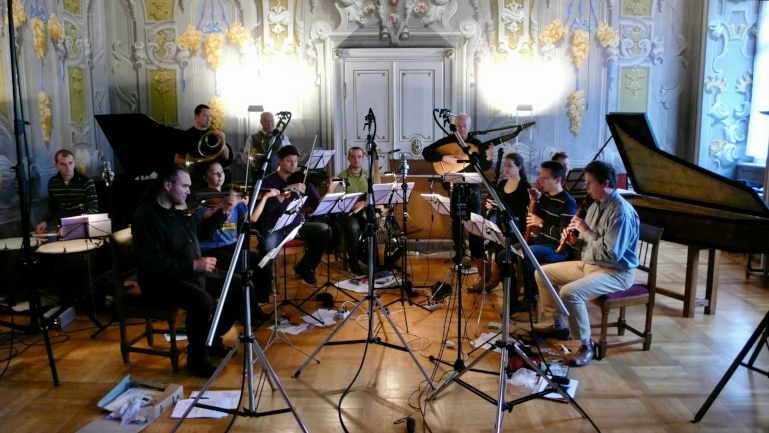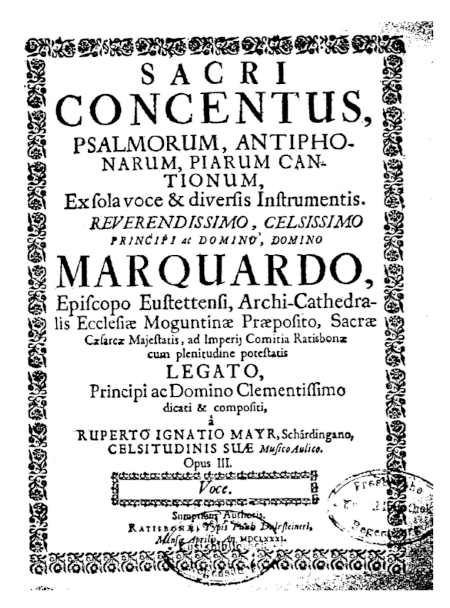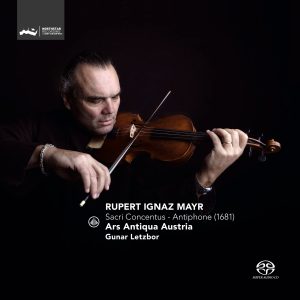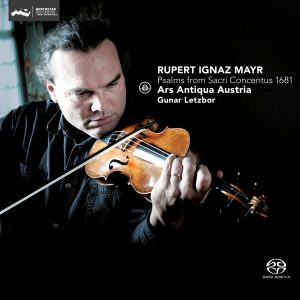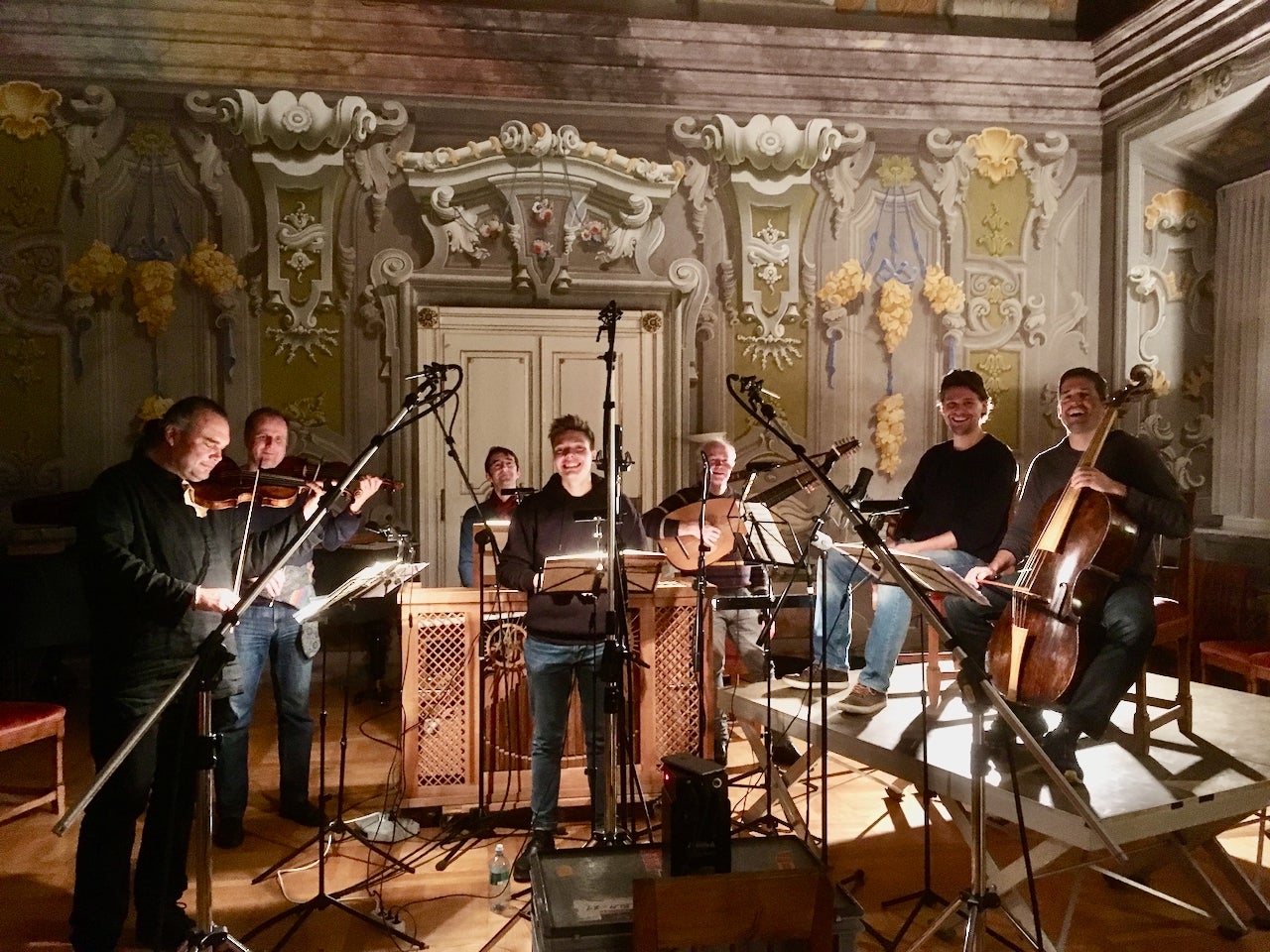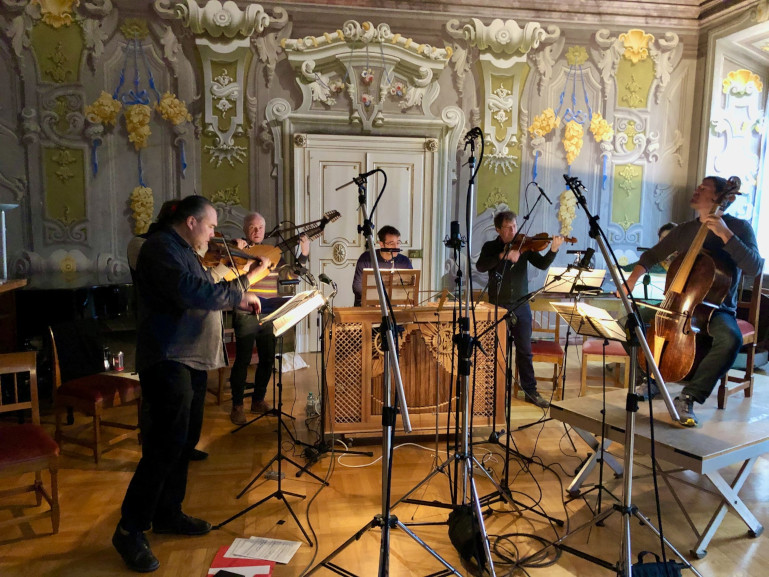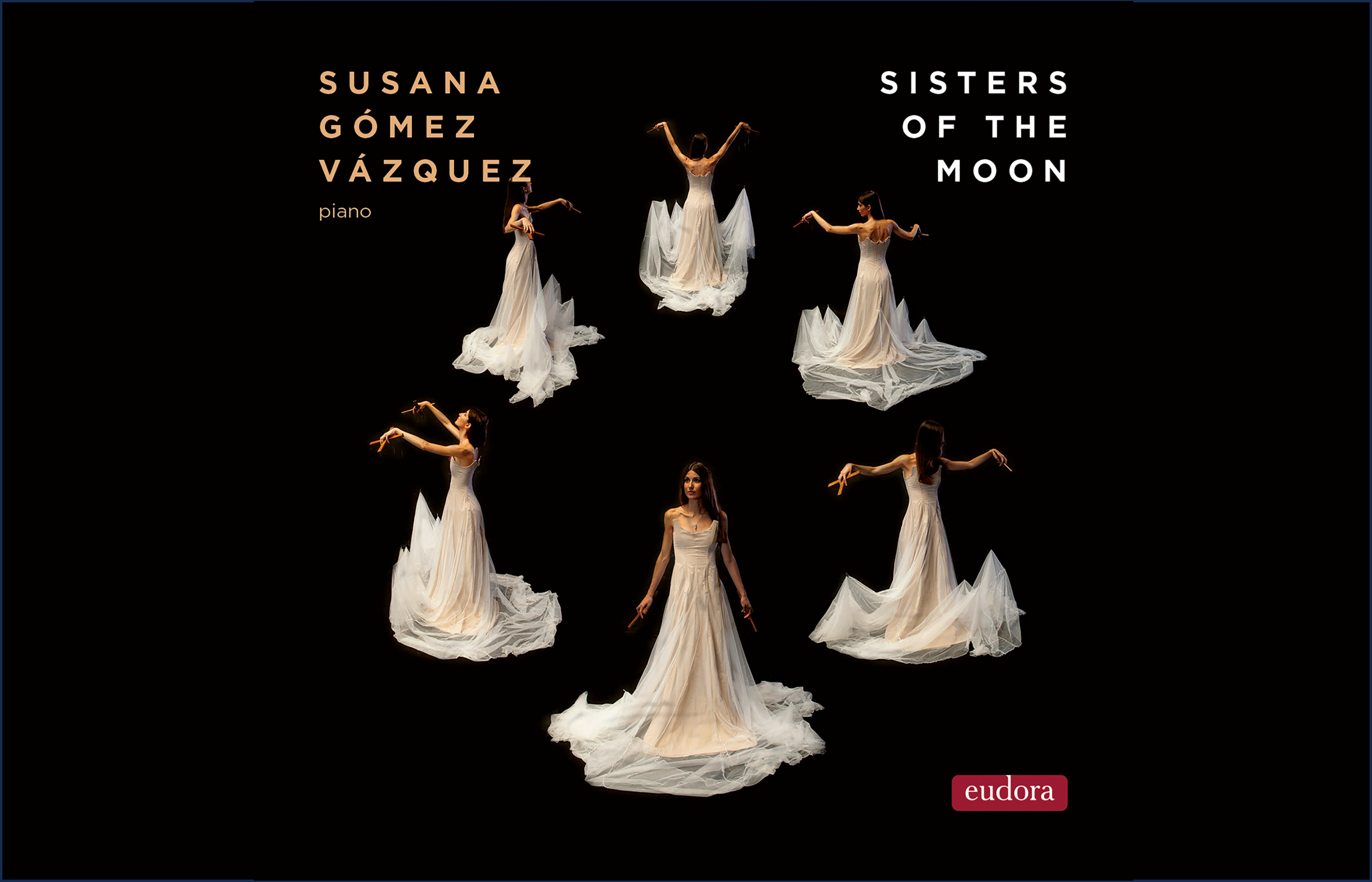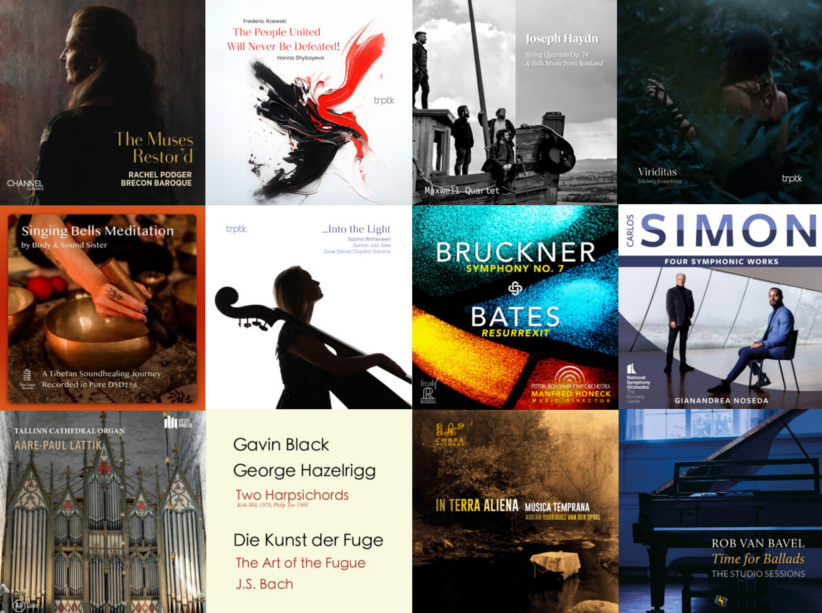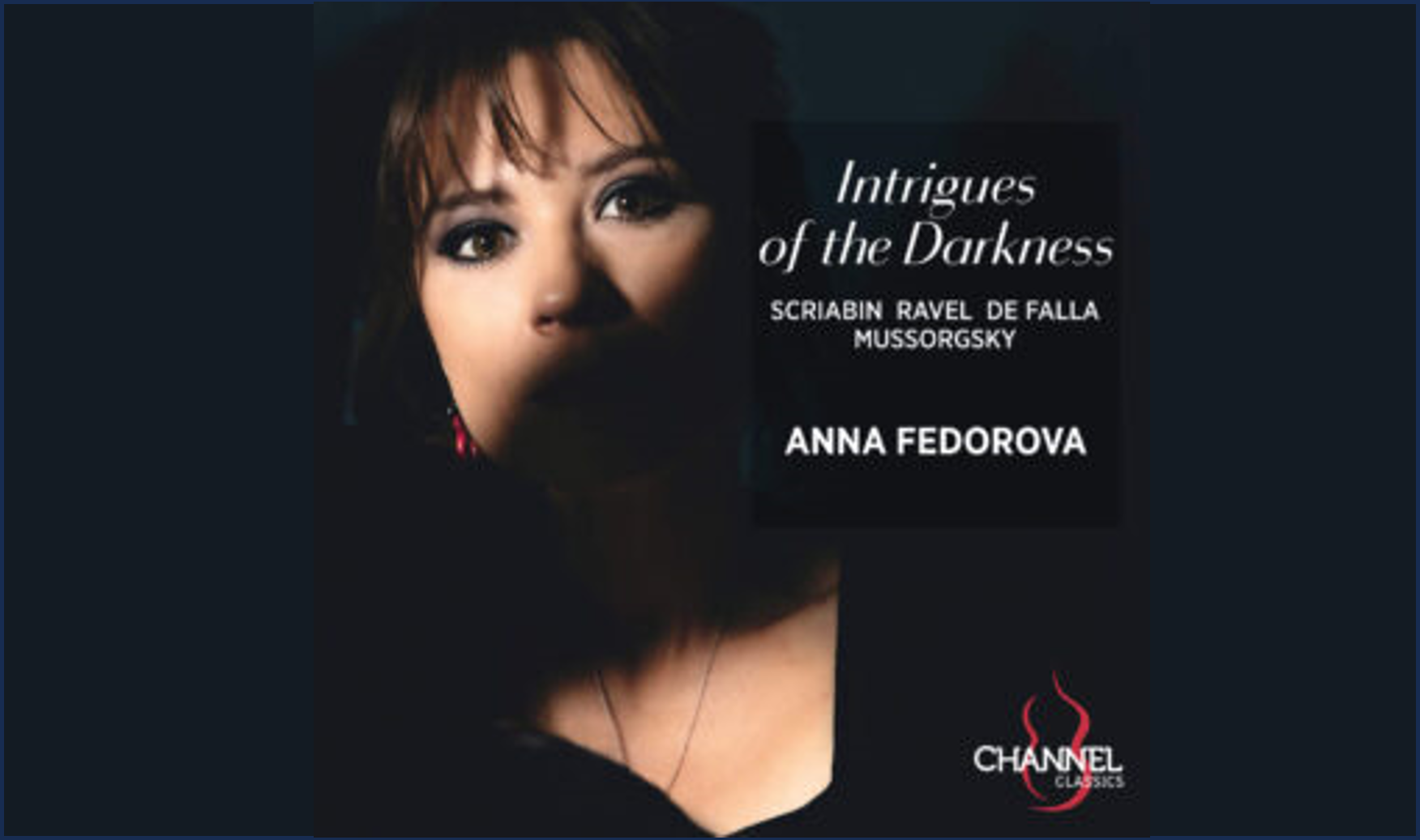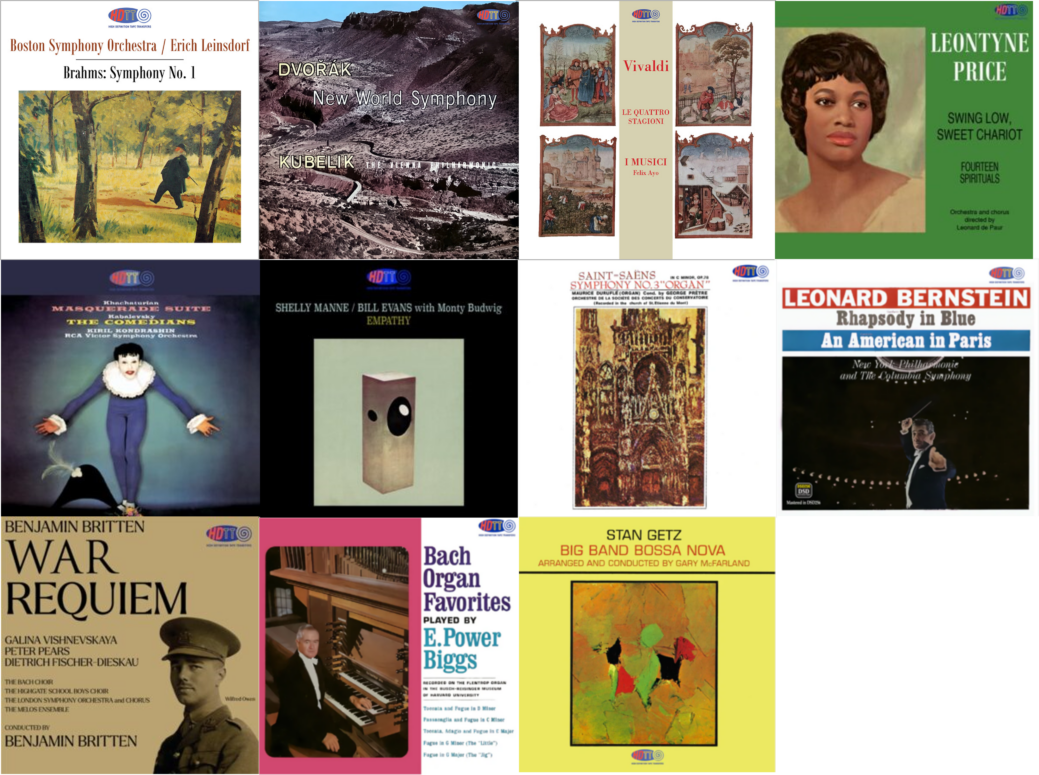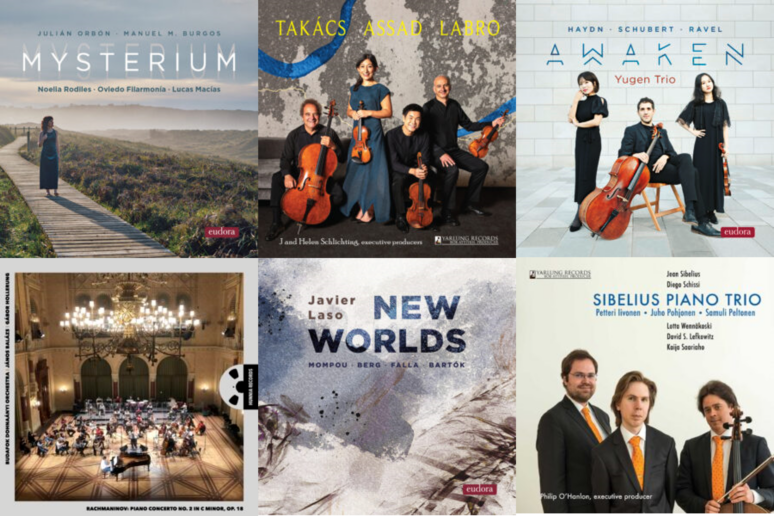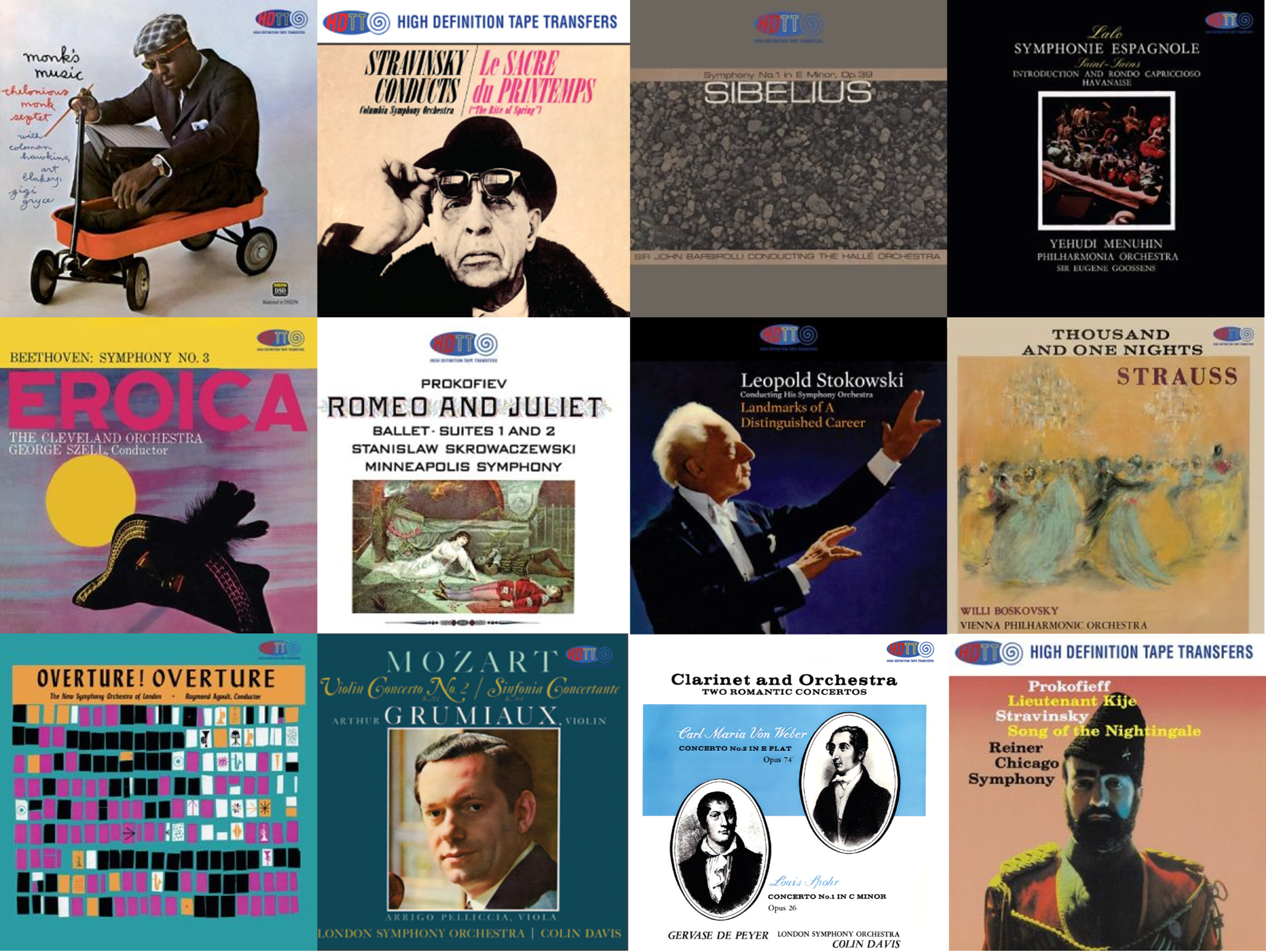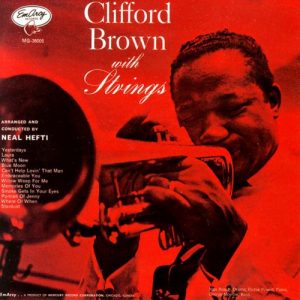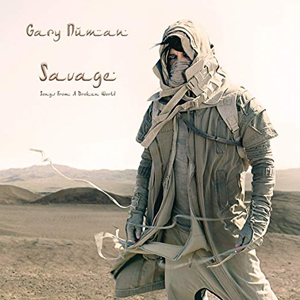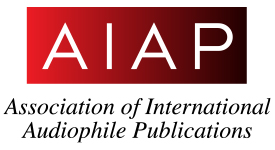The recordings by Ars Antiqua Austria continue to provide a rich treasure of musical enjoyment in our home. I group these next three recordings for no excellent musicology rationale, but simply because I enjoy the comparison of the all-instrumental works from a small rather hermetically sealed court (Graupner) and those with voice (Mayr) from a larger more affluent prince-archbishop household where the music was created both for church and table at the court in Freising, north of Munich.
The three albums make a nice triptych to enjoy, and each is discussed below. Read on, or follow the links to navigate further down this article:
- Chalumeaux Concerti by Christoph Graupner
- Rupert Ignaz Mayr - Sacri Concentus Antiphonae
- Rupert Ignaz Mayr - Psalms from Sacri Concentus
Chalumeaux Concerti by Christoph Graupner - Ars Antiqua Austria. Challenge Classics | Northstar Recording (2012 (DXD) HERE
The Chalumeaux Concerti catapults to a position of special interest/enthusiasm for me with the use of chalumeaux, an early predecessor of the clarinet (albeit with much more attractive tonality to my ear). The opening work is a concerto for two chalumeaux, together with two violins, viola and harpsichord. I find it a completely captivating piece, one I've not heard before. In fact, all of the music on this album is new to me, as is the composer Christoph Graupner. I found the album a very enjoyable transversal of new musical territory, and I've come back to it multiple times for a re-listen over the past week. I expect I shall do so multiple times again.
Christoph Graupner (1683 - 1760) was a German harpsichordist and prolific composer. He was a contemporary of J.S. Bach, Telemann and Handel. In 1705, Graupner apparently played harpsichord in the orchestra of the Hamburg Opera concurrently with Handel's tenure there as a young violinist. In 1709, Graupner accepted a position with the house orchestra of the court of Hesse-Darmstadt and in 1711 became the court orchestra's Hofkapellmeister (court chapel master).
The article in Wikipedia about Graupner relates of an interesting intersection of the lives of Graupner, Telemann and Bach:
"Precarious finances in Darmstadt during the 1710s forced a reduction of musical life. The opera house was closed, and many court musicians' salaries were in arrears (including Graupner's). After many attempts to have his salary paid, and having several children and a wife to support, in 1723 Graupner applied for the Cantorate in Leipzig. Telemann had been the first choice for this position, but withdrew after securing a salary increase in Hamburg. Graupner's "audition" Magnificat, set in the style of his teacher, mentor and predecessor, Kuhnau, secured him the position. However, Graupner's patron (the Landgrave Ernst Ludwig of Hesse-Darmstadt) would not release him from his contract. Graupner's past due salary was paid in full, his salary was increased; and he would be kept on staff even if his Kapelle was dismissed. With such favorable terms, Graupner remained in Darmstadt, thus clearing the way for Bach to become the kantor in Leipzig.
"After hearing that Bach was the choice for Leipzig, on May 4, 1723 Graupner graciously wrote to the city council in Leipzig assuring them that Bach "is a musician just as strong on the organ as he is expert in church works and capelle pieces" and a man who "will honestly and properly perform the functions entrusted to him." (Wikipedia)
Graupner's composition output was apparently prodigious (there are about 2,000 surviving works in his catalog), but little of it was heard following his death. He worked most of his creative life in a relative musical backwater, the court of Hesse-Darmstadt. His works were not published during his lifetime but left in in manuscript. Upon his death, his employer, the Landgrave of Darmstadt, refused to give them up, so they were preserved in the Court Library (fortunately), but without much chance of performance.
His music was, accordingly, largely ignored until a revival in the early twentieth century. As late as 1998, there were very few recordings available, but I note quite a few today. Given the exotic combination of instruments included in his composition (such as the chalumeaux heard here), one can be hopeful that Ars Antiqua Austria will return to mine that catalog (now housed in the Technical University Library in Darmstadt) for further recordings.
For a detailed review of the musical content of this album, I'll refer you to the full review in Audiophile Audition, 2013, (HERE) with which I agree. It says, in part, "The current recording celebrates an instrumental embarrassment of riches at the court, where sometime in the 1730s the orchestra acquired, one after the other, the services of three chalumeau players. The chalumeau is the soft-spoken forerunner of the modern-day clarinet, and its dulcet tones inspired Graupner to write the gentle, serenade-like Overture GWV 449, a sort of Baroque Serenata Notturna… The Overture GWV 452 also includes a minuet, here as the second movement. But the inclusion of horns and timpani makes this an altogether different affair, much heartier, with a generous open-air quality reminiscent of the hunt, a major pastime for the Landgrave. Both works are very appealing."
I find the sound of the horns and timpani in GWV 449 to be eminently satisfying in the soundscape of the whole, in contrast to the comment made further along in the AudAud review—perhaps a difference in our systems, or with me listening to a more resolving DXD download rather than an SACD, or simply the result of different expectations. To me, this album is superbly recorded, once again, with the full Bert van der Wolf attention to recreating, as nearly as possible, the live natural acoustic space of the original performance.
Rupert Ignaz Mayr - Sacri Concentus Antiphonae 1681 - Ars Antiqua Austria. Challenge Classics | Northstar Recording (2019 (DXD) HERE
Rupert Ignaz Mayr - Psalms from Sacri Concentus 1681 - Ars Antiqua Austria. Challenge Classics | Northstar Recording (2018 (DXD) HERE
The two Sacri Concentus albums of music by Rupert Ignaz Mayr (1646-1712) present sacred concerts for voice with virtuoso solo violin and basso continuo in psalm settings, followed by an album of antiphons, "exquisite church music which Emperor Leopold I himself proclaimed as being definitive for the Catholic lands." In traditional Western Christian liturgy, the antiphon was a short sentence sung or recited before or after a psalm or canticle, or, as widely used in Gregorian chant it was sung by two parties opposite each other. Often a single performer was answered by a group of singers. In the album of antiphons, the antiphonal practice is further apparent in the alternation between singers and instrumentalists.
Ars Antiqua Austria joins with members of the St. Florian institute for boy choristers (a liturgical training tradition since 1071) in creating these two albums of church service music.
Writes Gunar Letzbor in the liner notes: "In the baroque period, most major churches, both Catholic and Protestant, engaged their own ensembles who provided celebratory and largely professional church music. The treble part (the cantus) was exclusively sung by boys; the alto part mostly by men singing falsetto, at times also by boys; the tenor and bass parts, in all cases, were sung by men. Training boys to sing the cantus was, in most cases, the responsibility of the director of church music, sometimes also the organist. The boys often lived with the musicians' families; they also received formal schooling and usually learned to play instruments too. After their voices broke, the choristers often continued performing in their respective ensembles, either as instrumentalists or as adult singers. Joseph Haydn came from this very tradition—he received his musical training as a chorister at St Stephen's Cathedral in Vienna."
And so here we have some very authentic period performances to enjoy. Ars Antiqua Austria gives us four psalms performed by four different singers with four-part string accompaniment and a similarly scored hymn setting. There are some truly nice moments in this recording and I wished for more.
As to his commitment to creating an authentic sound in this recording, Gunar Letzbor explains, "Would it be possible for me to perform baroque church music with female voices? Everything is possible! But why should I not realize the baroque sound ideal of the soprano voice if that is possible as well? Of course many things would be easier, and the intonation probably more perfect, if we worked with specialized female singers. It would also be easier not to perform with small (and thus closer to the baroque model) ensembles. It would be more convenient not to use baroque instruments. We could make life much simpler by eschewing gut strings and going for plastic instead – tuning problems would be a thing of the past.
"For the choirboys it would also be much easier if they only had to sing folk tunes for tourists' or Mother's Day concert—these would also earn them more money!
"I come from the mountains and I love stony paths!" —Gunar Letzbor
And I am grateful, very grateful, for maestro Letzbor's love of the stony paths.
He has brightened my week with this exquisitely performed music.
Boys voices are always a particular pleasure to hear in this music. The opening track of Psalms, Laudate pueri Dominum, is sung by a boy soprano in beautifully clear, vibrato-less, bell-like clarity. If the intonation is not always perfect, so be it. It is absolutely lovely.
We then transition to a rich vibrant adult bass voice in Nisi Dominus, a delicate alto male voice in Beati omnes, a pure soft-but-agile tenor voice of good power in Confitebor tibi Domine, and again to a beautiful soprano voice by a different boy soprano in Venite gentes (perhaps my favorite of the set).
Each Psalm is supported by the instrumentalists of Ars Antiqua Austria. Sometimes echoing, sometimes contrasting or commenting, always supporting, the musical line of the singer. Different instruments take on differing roles across the various pieces. Sometimes it's an instrumental solo answering, frequently there's basso continuo providing depth and texture. All very tastefully, expertly, and sympathetically accomplished.
The two vocal albums reflect the beauty that music for western religious services has granted to us. One does not have to be of a faith-based belief system to appreciate the beauty of this music. Over the decades to which I've listened to baroque religious compositions, I've simply relaxed into the luxury of the sound. Never have attempted to follow the words or translate from the Latin, I simply take this in a music that nourishes my mind. And these two albums provide much nourishment.
Highly recommended once again.
Bert van der Wolf and Gunar Letzbor again take us to the Altomonte-Saal, Abbey of St. Florian, for the recording of this aural treat (see photos and comments in Part 1 and Part 2). This location continues to provide an exquisite setting for the music Ars Antiqua Austria presents for our enjoyment.
With Bert van der Wolf engineering the recording and Gunar Letzbor and his ensemble delivering the music performance, I'm simply prepared to come along wherever they've chosen to take me. They are guides to great musical experiences whom one can follow without hesitation.
Also see:
The Artistry of Ars Antiqua Austria, Part 1
The Artistry of Ars Antiqua Austria, Part 2
All photos courtesy of Bert van der Wolf and Northstar Recording





